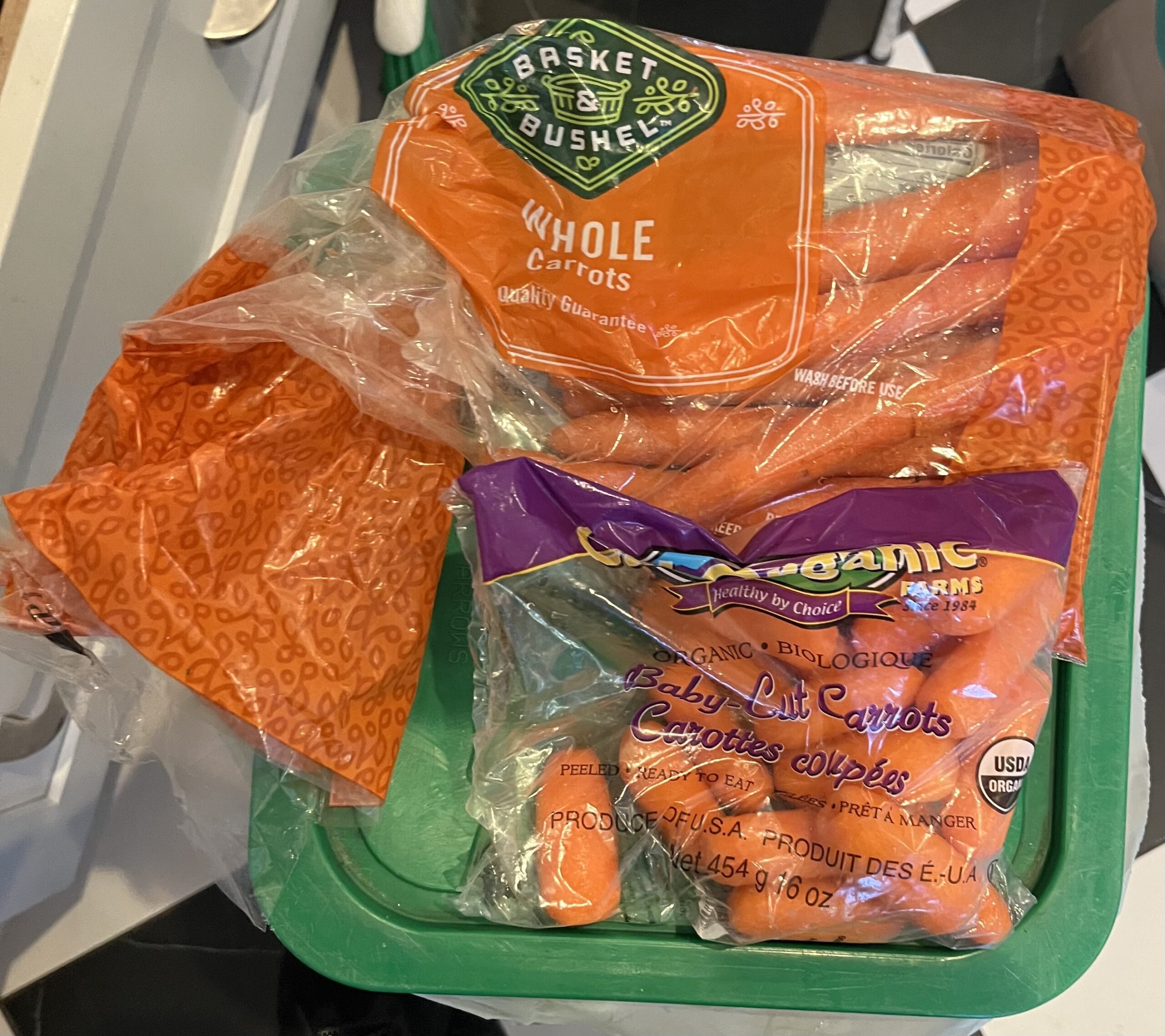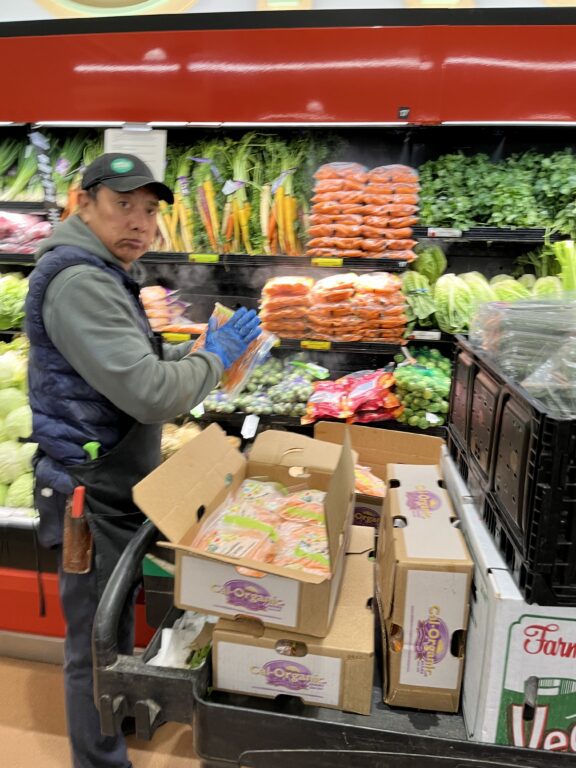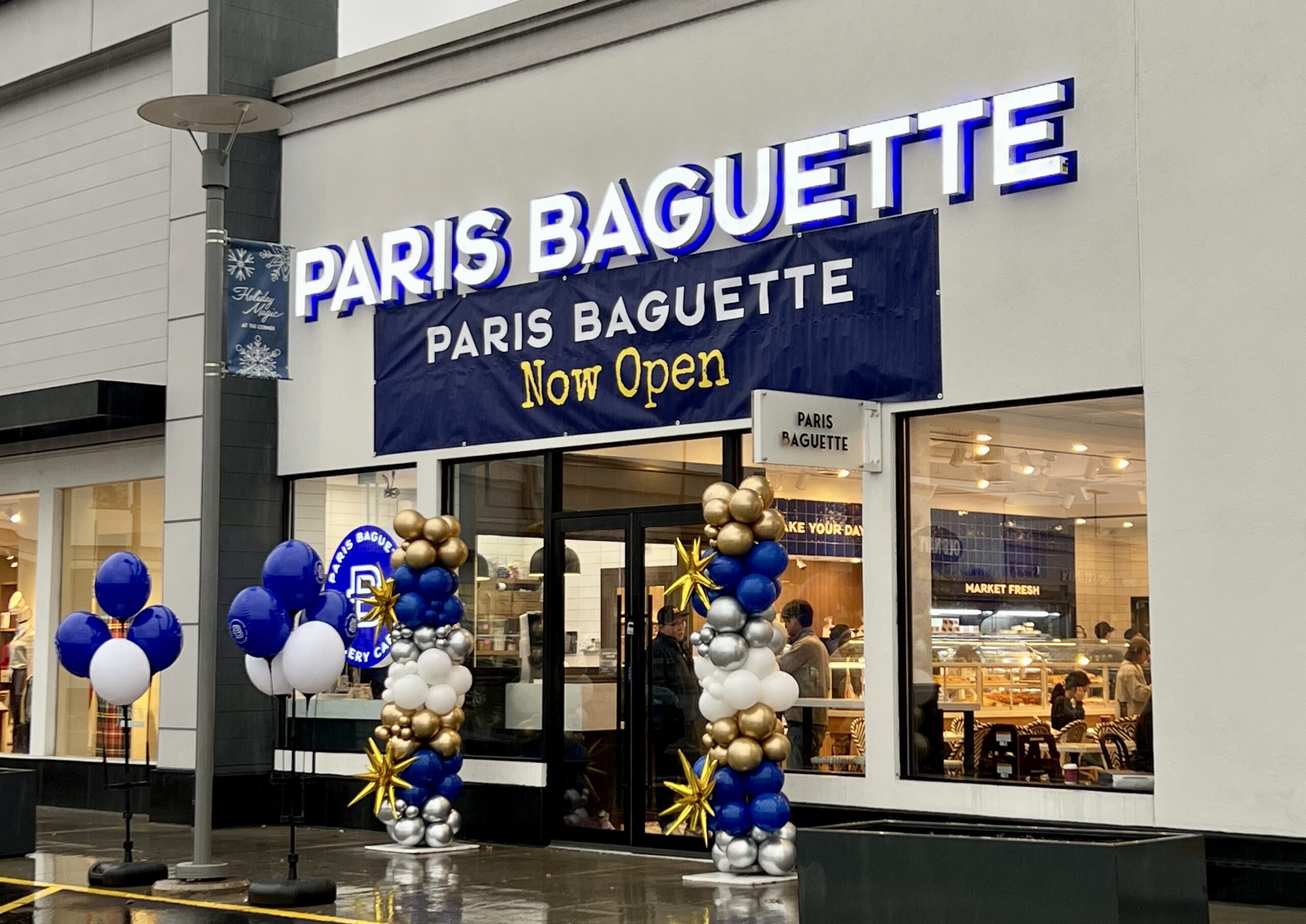Consumer Diary: E.coli from Carrots, Black Friday

Audio By Carbonatix

These are the carrots – included in the bunches nationwide contaminated with E.Coli – that we threw out after our supplier notified us of the problem. Photo credit: Harlan Levy
Consumer columnist and West Hartford resident Harlan Levy has more than 20 years of experience writing stories about everyday experiences that anyone could encounter.
By Harlan Levy
I love fresh carrots, a great snack with hummus, cheese, and wine. We have a bagful in our fridge, and I (almost) can’t believe the reports about the fatal E.coli bacterial outbreak from organic carrots found in national supermarket chains like Trader Joe’s, Whole Foods, and others that has killed one man and infected 39 people in 18 states from West Coast to East Coast … so far.
I‘m not that surprised at the very recent similar E.coli outbreak from McDonald’s quarter pounders, but healthy organic carrots? Is nothing sacred? Makes me think we should be wary of all the fresh garden produce we covet from farmers markets.
On Wednesday I talked to a representative from Whole Foods at Bishops Corner, our go-to supermarket (Big Y is No. 2).
”We got rid of all of the carrots on Monday,” he said. “And we’re restocking them today.”
Meanwhile Imperfect Foods, the supplier that sold us the carrots in our fridge, emailed us telling us to chuck all our carrots, many of which we have served to friends. We did.
With carrots the unanswered question is what is causing these flare-ups? One guess is it’s the water used to hydrate the plants. Coincidentally, the government just took action on that. In late October, the U.S. Food and Drug Administration and Environmental Protection Agency announced the first antimicrobial treatment for pathogen reduction in pre-harvest agricultural water – “a landmark achievement in enhancing food safety that effectively combats foodborne pathogens E. coli and salmonella in water used to grow crops … to ensure robust treatment options are available for agricultural use.”
Maybe that will help tamp down these unpredictable dangerous recurrences. But how can we know? Oy!

On Tuesday, Whole Foods at Bishops Corner restocked its carrot supply after discarding all its carrots implicated in the E.coli outbreak on Monday. Photo credit: Harlan Levy
Black Friday
You’ve probably seen the flurry of digital ads proclaiming Black Friday deals in advance of the vaunted shopping spectacular, which “officially” starts on Nov. 29. Amazon is starting on Friday Nov. 21. That’s a month before both Christmas and Hanukkah’s first day, Dec. 25, promising the results of a double-dealing shopping surge this year.
The National Retail Federation‘s new annual holiday shopping survey predicts a record 184.3 million consumers will be shopping that period, with Black Friday’s five days attracting 131.7 million and 52.7 million on Cyber Monday, with online spending projected to hit $40.6 billion.
So here are some suggestions derived from various online sites, including goodhousekeeping.com, Consumer Reports, and others:
- Start early: Retailers are offering deals on items in almost every category, and many have holiday refund and return policies that include partial refunds for items that go on sale for less later in the season.
- Shop online to compare prices using websites. You may find more options and can easily compare prices and shop at different retailers. For current prices at various stores check Google Shopping (Type exact model, hit “Shopping” tab at the menu up top), PriceGrabber, and Shopzilla. Facebook, TikTok’s shopping platform, Instagram, and Pinterest reveal exclusive deals and promotions. Brands may promote exclusive offers on these channels. Also, check BestBlackFriday.com, DealNews, TheBlackFriday.com, and GottaDeal for deal alerts and filter by product category. Amazon, Best Buy, Target, and Walmart have shopping apps as well. Use free Camelcamelcamel – a free website and browser extension tracking Amazon prices. For price alerts, input a product URL and click “Add Amazon Price Watch.”
- Sign up for retailer newsletters: Get first dibs on deals. Sign up for Good Housekeeping’s newsletter.
- In store: BuyVia, Shopkick, ShopSavvy, and Shopular apps let you scan barcodes or QR codes to compare prices, get discounts, and score coupons. With Amazon’s mobile app use a smartphone camera to scan products and compare prices.
- Use loyalty programs: They may provide early access to coupons, sales, and promotions, earning rewards for purchases. Sign up for Black Friday shopping alerts to find products that are in stock to buy online and pick up at a store, which subtracts shipping costs.
- Check store policies in advance: Know a store’s price-match, return, and restocking fee policies. Read the fine print. Most retailers extend their return windows, typically into January. So always keep your receipts. And if a purchase price goes lower in-store or online before return deadlines, know if you can request a price match. Or return the higher price item and buy it again for less.
Good luck, and have fun!
NOTE: If you have a consumer problem, contact me at [email protected] (“Consumer” in subject line), and, with the power of the press, maybe I can help.
Like what you see here? Click here to subscribe to We-Ha’s newsletter so you’ll always be in the know about what’s happening in West Hartford! Click the blue button below to become a supporter of We-Ha.com and our efforts to continue producing quality journalism.



